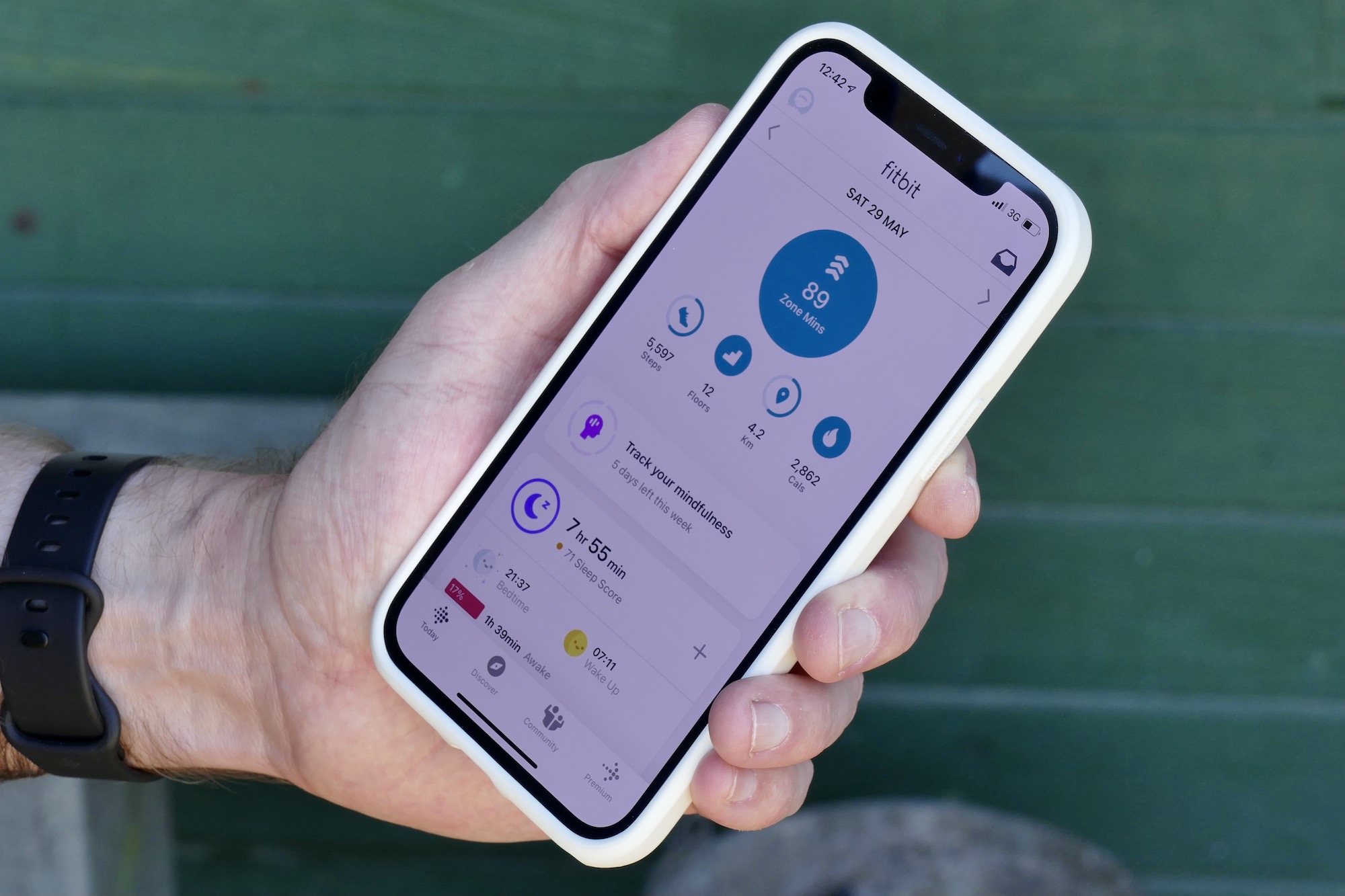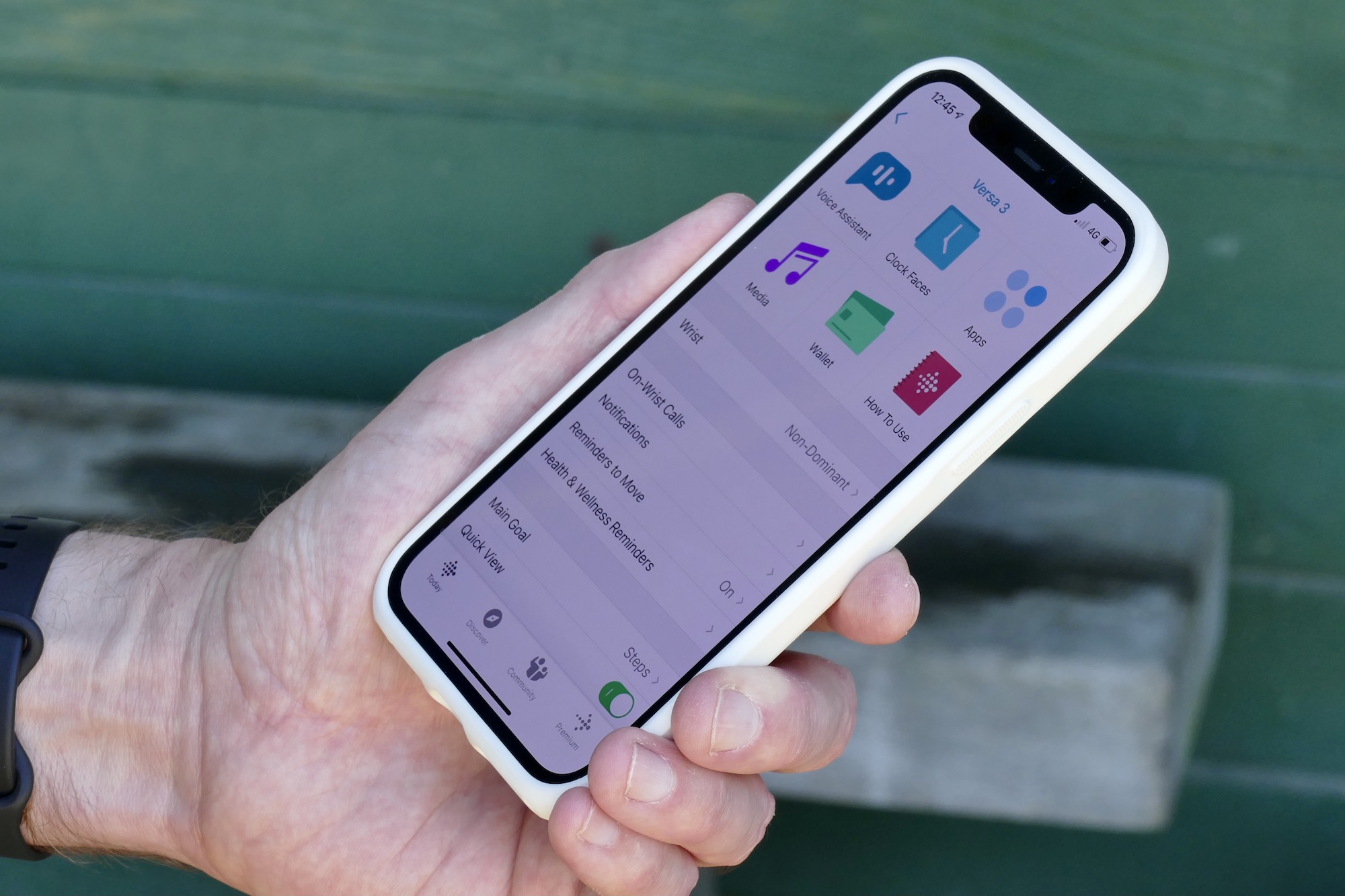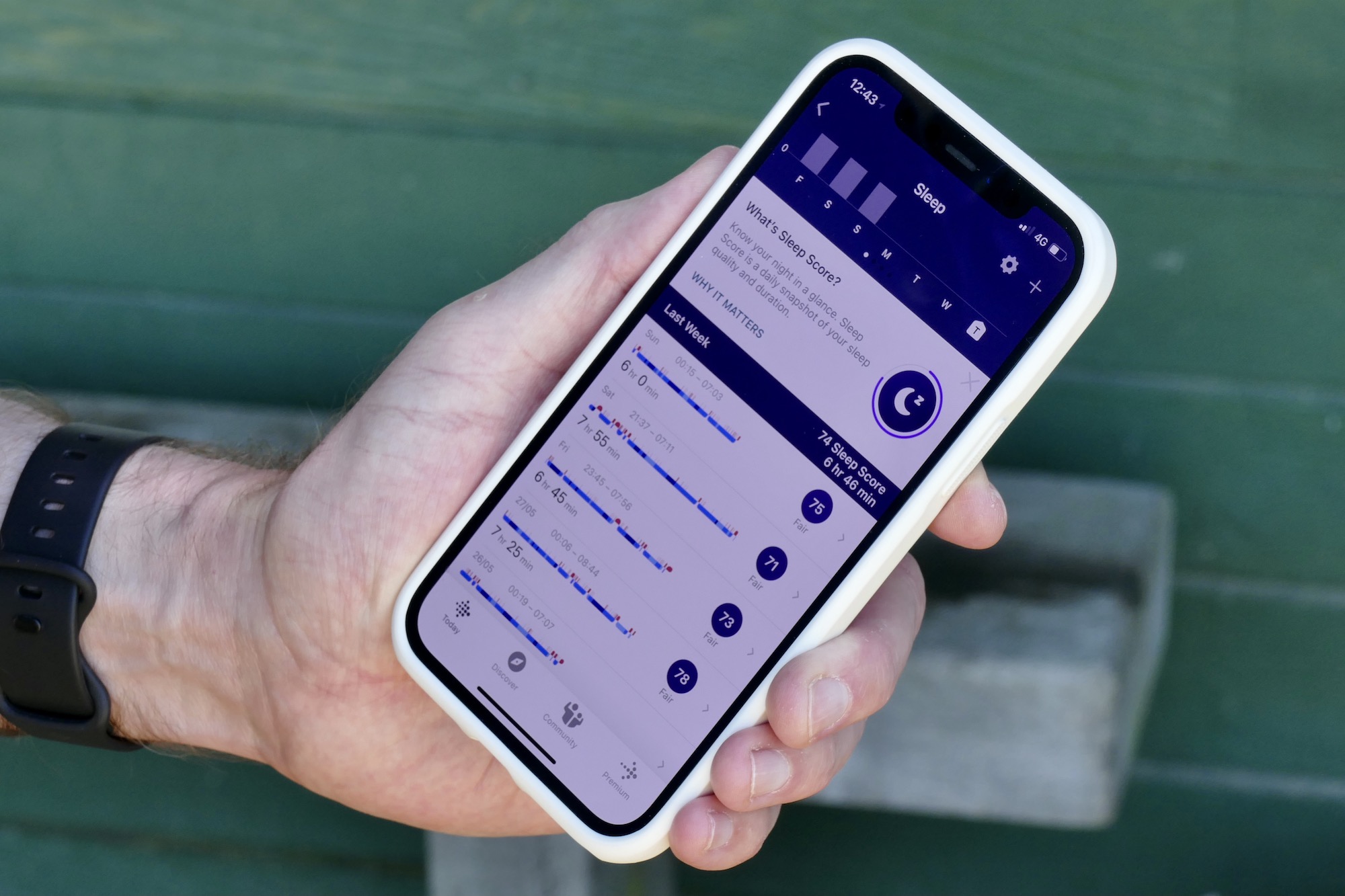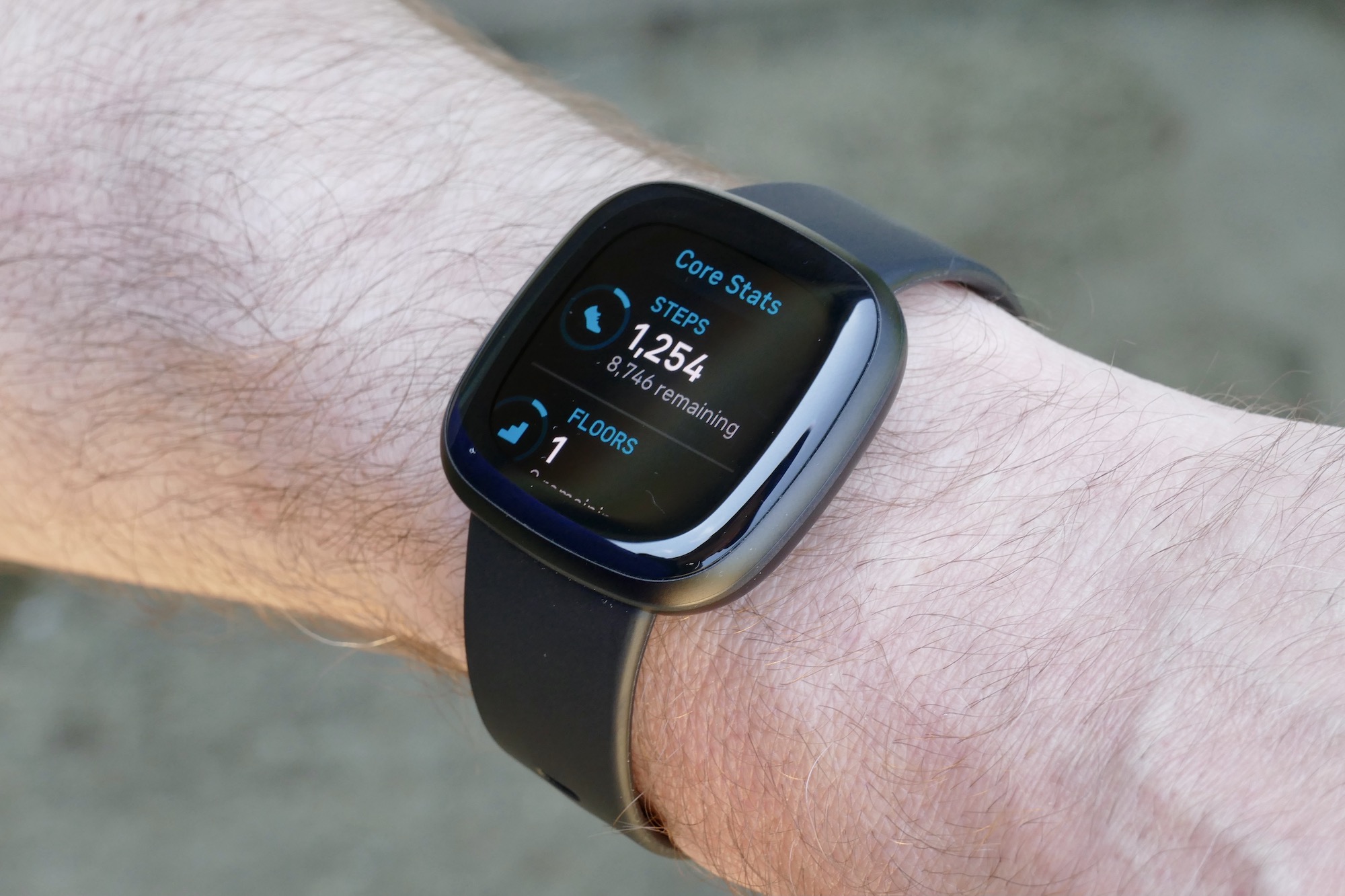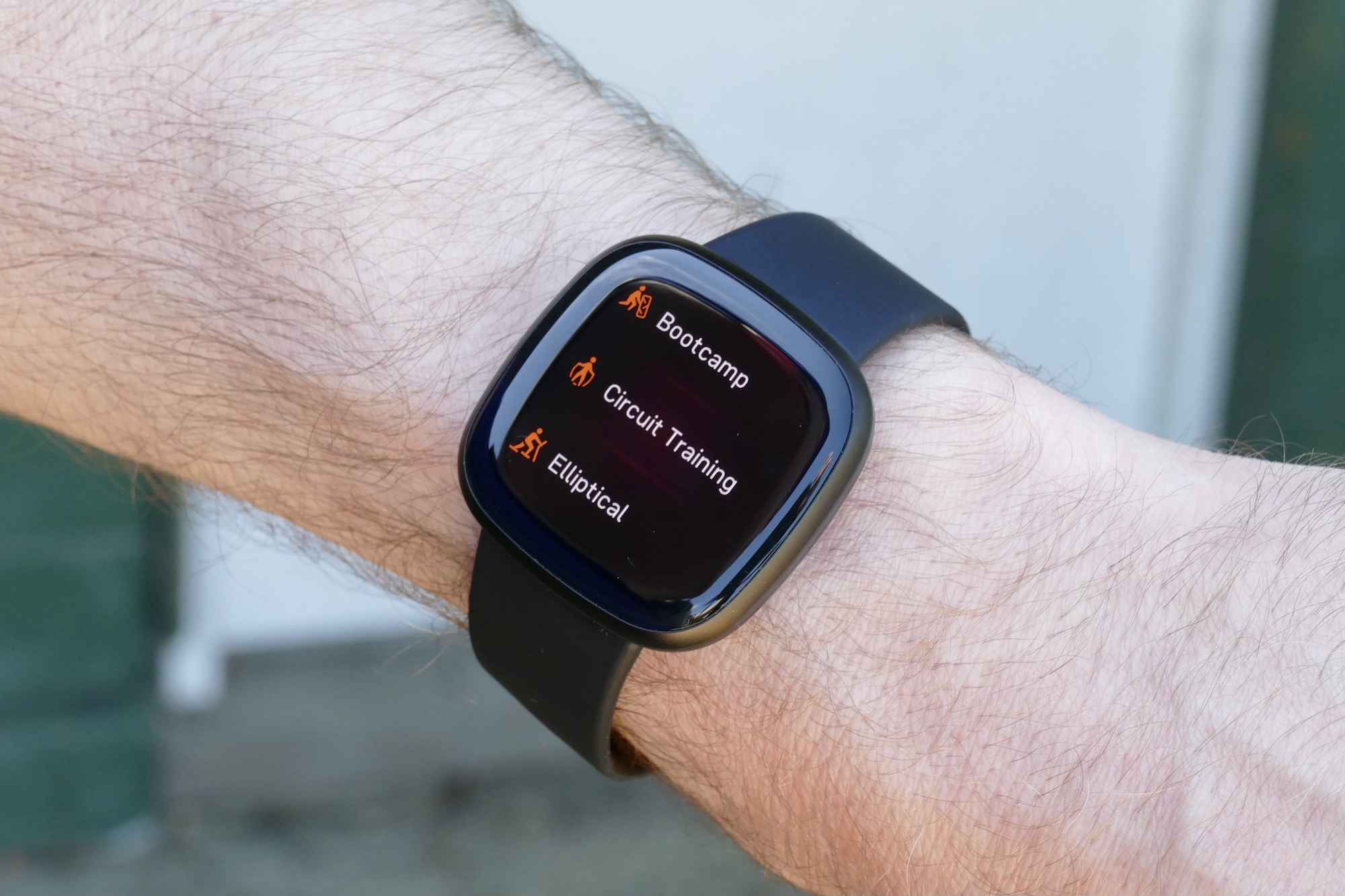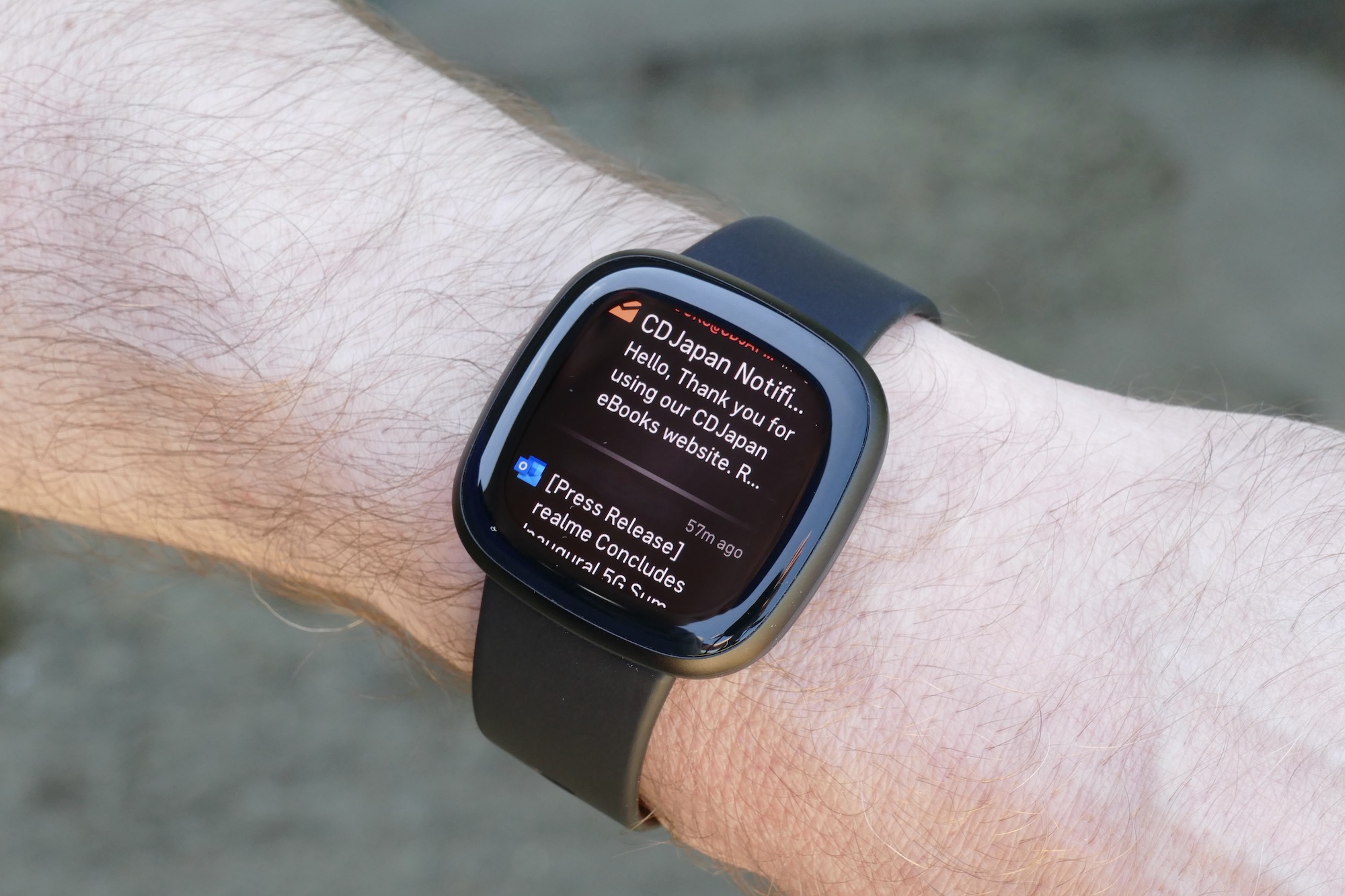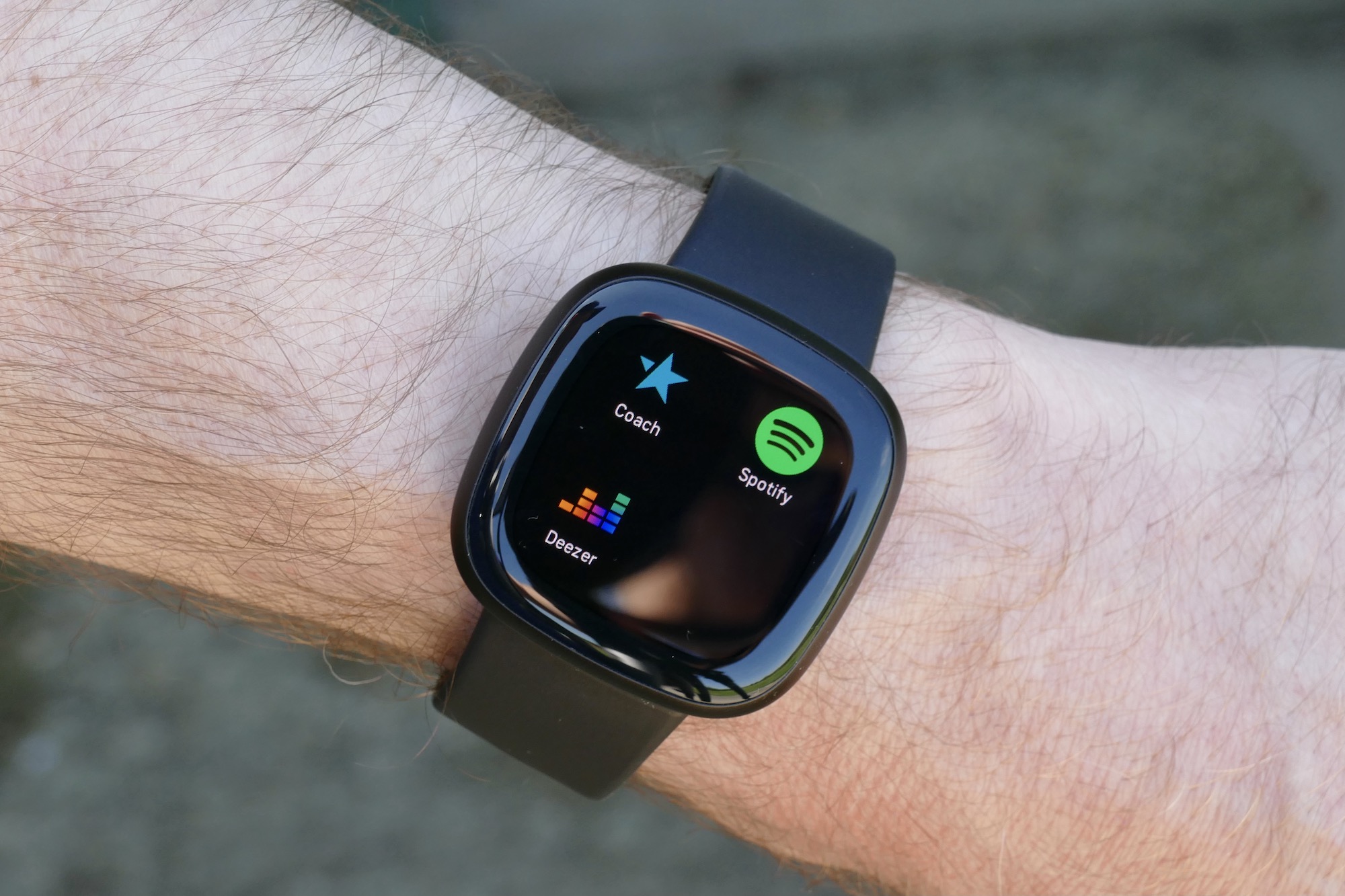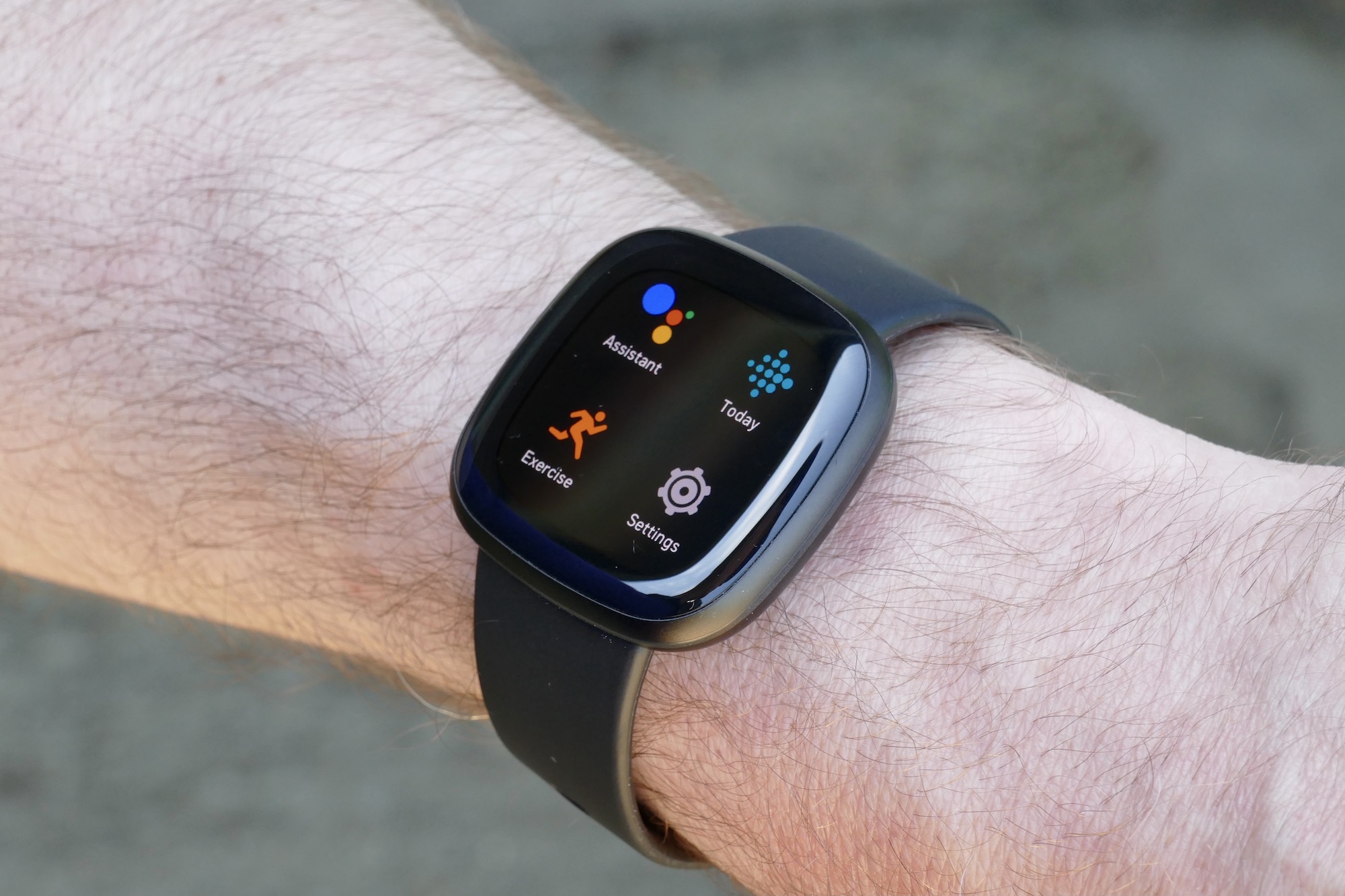“The Fitbit Versa 3 is so comfortable and works so well, you will forget you're wearing it until you need it. Best of all, when you do call it into action, it has all the fitness tracking features you could want.”
- Very comfortable
- Simple to use
- Comprehensive health tracking
- Battery lasts a week
- Side button is awkward to press
I put the Fitbit Versa 3 on more than 10 days ago and have pretty much forgotten it was on my wrist, meaning it has stayed there 24-hours a day, silently tracking my movements, sleep, and workouts. The way it has slipped into my everyday life is a testament to its simplicity and good design, and although it’s not really a smartwatch, it’s a definite step above basic fitness trackers. Let’s go into more detail about this excellent wearable.
Design
The Versa 3 is a watch-like fitness tracker, rather than a full smartwatch. My review version has a simple black strap made from a material that feels similar to the synthetic rubber used for Apple Watch Sport straps, attached to the black aluminum case. It’s a 40mm case and just 12mm thick, so it can be worn under a cuff without being annoying, and the 42-gram weight means it’s entirely unobtrusive.

The straps are easily removed with a single button press, and a choice of a short or long strap is included in the box. I’ve stuck with the short strap, which fits my 6.5-inch wrist with a hole to spare and minimizes the amount of extra strap to tuck away. This has gone a long way to making the Versa 3 so comfortable to wear. It’s light and doesn’t get particularly hot or sweaty, and I’ve been able to wear it overnight to track sleep.
There is a single button on the side of the case which acts like a back control, but it’s not a physical button, more of a touch-sensitive panel. It’s set low on the case and is awkward to locate and press, and I still spend a few seconds feeling around for it. The 1.58-inch AMOLED touchscreen has a 336 x 336-pixel resolution and is sharp and very bright. The size is just right, it’s easy to interact with, information is displayed clearly, and it’s readable in most lighting conditions.

Fitbit almost gets everything right with the Versa 3, apart from the overall design. The basic shape and lines aren’t conventionally attractive, and it’s not something I would wear and show off. The simple look and choice of colors will elevate it above a fitness band for some, but because it’s not overtly stylish in any way, I’d rather go for the stealth black model and keep its existence under the radar.
Fitness tracking
It’s hard to imagine what other features most people would need to track their health and activity above what’s offered by the Versa 3. It has a heart rate sensor on the back, can monitor blood oxygen (SPo2) levels, checks skin temperature, plus it has GPS, is swim-proof, and a wide range of workout tracking modes, some with automatic recognition. What it doesn’t have is an electrocardiogram (ECG), which comes with the more expensive Fitbit Sense wearable.
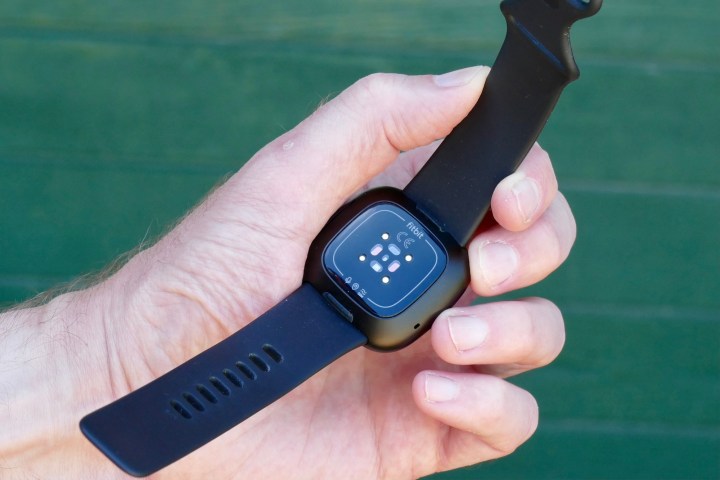
My chosen watch face shows heart rate, steps, and calorie burn which is all the data I need at a glance. There are other, more comprehensive watch faces available too, although I struggled to find one that I thought looked good. To see more detail you either select the Today app, or just swipe up on the screen where it shows step count, distance traveled, floors climbed, active time, and sleep scores. If you choose to manually add calorie intake, water consumed, and even core temperature it shows these too. It’s all clear, concise, and easy to find.
Tracking workouts is similarly easy, and all the options are accessed under the Exercise app. I tracked a walk with the Fitbit Versa 3 and the Apple Watch SE, both using GPS. The Versa 3 showed a total distance of 1.58 miles, 243 calories burned, and an average heart rate of 97bpm. The Apple Watch SE recorded 210 total calorie burn, a 1.6-mile distance, an average heart rate of 99bpm. Both wearables showed the same GPS data, but the Versa 3 did lose the signal once. The differences between them are minimal, and at all other times, they have remained consistent with each other.
Compared to Apple’s Fitness app, the Fitbit app is far more comprehensive, with masses of detail for the more committed exerciser. However, it’s also accessible for someone who just wants the basics. The GPS maps show heart rate zones and pace, for example, showing where you worked hardest, but this is all found under a different tab and not mixed in with the general data.
For more in-depth detail you’ll need to pay for Fitbit Premium, the $10 per month subscription service. For most people though, this won’t be necessary. Watch faces are another area where further payment is an option, with many of the watch faces requiring a small fee to be paid before you can use them.
Software and battery
I’ve used the Versa 3 connected to an iPhone 12 Pro using Fitbit’s app, and it’s also available for Android phones. I keep coming back to the fact the Fitbit is so easy to use, and this continues with the software. The app and the interface on the Versa 3 itself don’t take time to learn, aren’t hampered by odd user interface choices, and are mostly reliable too. The Versa 3 did fall over once though, getting stuck on the watch face. It needed placing on the charger and the button holding down for it to restart, which then cured the problem. The connection between the Versa 3, the app, and my iPhone 12 Pro has been great, and syncing takes just a few moments.

However, it’s not a smartwatch. While Google Assistant responds to my voice and does what I ask, and the Versa 3 takes calls, it is terrible at providing notifications and never really feels a connected part of my smartphone like the Apple Watch does. Notifications can’t be interacted with, and although I’ve played with the settings multiple times, it still doesn’t alert me to all incoming messages properly.
There are plenty of additional features that up the value though, including Fitbit Pay, online-only Spotify playback and offline Deezer support, a Find My Phone alert, plus some short animated “Coaching” workouts to follow. That’s before looking at the community aspect of the Fitbit app, where you can challenge friends and join groups based around a common health goal. Perhaps the best thing here is that all these are optional, and none of the features are endlessly pushed as something you should do. Once again, it adds to the overall friendliness of the Fitbit, and you can get as involved as you like without pressure.
Battery life is better than most smartwatches, but not as good as most fitness bands. The Versa 3 has lasted for seven days with all-day heart rate tracking and wearing it overnight, but without the always-on screen. Charging takes less than an hour using the included proprietary magnetic charging plinth.
Price and availability
The Fitbit Versa 3 costs $230, or 200 British pounds, and is available to buy now from Fitbit, Amazon, and other retailers.
Our take
The Fitbit Versa 3 may be one of the most comfortable fitness wearables I’ve ever put on my wrist. It’s a true wear-and-forget device, not just from a hardware perspective, but from the simple and effective fitness and health tracking tools, for day and night, too. Good though this all is, it also works against the Versa 3, because the boring design isn’t one you’ll be itching to show off.
Not really noticing the Versa 3 also highlights another of its strengths: convenience. It stays reliably connected to my phone, produces helpful and easily readable stats, and offers sensible features I may actually want to use including Google Assistant and call support. The GPS works without issue, and is another feature you don’t need to “think” about, it just works when you require it.
The Fitbit Versa 3 is massively appealing, provided you can live with the faceless design, and is truly one of the few wearables you can wear 24-hours a day without discomfort. The friendly, comprehensive functionality adds to its appeal. However, you can find almost all of what the Versa 3 does for a lot less money, or get something a lot better looking that’s a real smartwatch for not much more.
Is there a better alternative?
If you’re not worried about the smartwatch-style design of the Fitbit Versa 3, but love the fitness tracking aspects including GPS, then the $130 Fitbit Charge 4 would be a cheaper alternative to consider. If you want a smartwatch more than a fitness band, the Apple Watch SE is our recommendation for iPhone owners, while Android owners should look at either the Samsung Galaxy Watch 3, or the Mobvoi TicWatch Pro 3.
If the prices of all these alternatives are too high, then the Honor Band 6 and Xiaomi Mi Band 6 can both be found for about $50, and provide many of the same features. No, the software isn’t as slick as Fitbit’s, but you won’t mind for the price.
How long will it last?
The Fitbit Versa 3 feels very durable, from the strong strap to the aluminum case, plus it’s water-resistant to 50 meters. The strap is easily replaceable, but does use proprietary fittings. Fitbit provides regular software updates, and recent versions have added new features, something unlikely to change for a little while yet, making the Versa 3 a good value buy if you want to use it long-term. There’s no reason to think it won’t last for more than two years.
Should you buy one?
Yes. It’s a stretch to call it a smartwatch and the design is a bit boring, but otherwise, this is brilliant fitness tracking wearable you’ll be happy to wear and use every day, all day.



